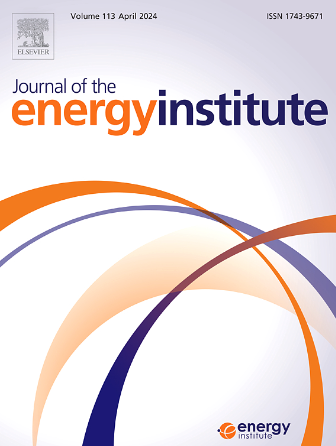Study on the kinetics and energy transfer during ignition of methane excited by NRP-SDBD non-equilibrium plasma
IF 5.6
2区 工程技术
Q2 ENERGY & FUELS
引用次数: 0
Abstract
The energy deposition distribution is crucial factor during plasma assisted ignition (PAI) influenced by streamer morphology, electric field, electron density and gas temperature. This paper presents numerical studies on energy transfer induced by gas heating and kinetic enhancement effect during ignition of lean and stoichiometric CH4/O2/He mixture excited by NRP-SDBD plasma. The two-dimensional plasma solver PASSKEy is employed to analyze hydrodynamic perturbation in a very small time-spatial scale for CH4/O2/He mixture with different equivalence ratios. A faster early perturbation response after plasma excitation occurs for stoichiometric CH4/O2/He mixture owing to more concentrated energy release. The plasma-participant path flux analysis model is newly developed to reveal the kinetic effects of key plasma species, dominant global reaction paths for oxidation of CH4. It is highlighted that the important role of CH4(v13) and O(1D) enriched at higher PRF by plasma-oriented kinetic reactions on formation of active radical O atoms and key intermediate CH3. High PRF is beneficial for release of H atoms along with the reduced consumption for O2 on the global reaction path of conversion from CH4 to CO2. Ultimately, the energy efficiency of gas heating is discussed from the view of plasma kinetics. The enrichment of O(1D) and charged species owing to improved PRF facilitates increase in the proportion of total discharge energy spent on gas heating attributed to the quenching reactions of O(1D) and recombination reactions of charged particles.
求助全文
约1分钟内获得全文
求助全文
来源期刊

Journal of The Energy Institute
工程技术-能源与燃料
CiteScore
10.60
自引率
5.30%
发文量
166
审稿时长
16 days
期刊介绍:
The Journal of the Energy Institute provides peer reviewed coverage of original high quality research on energy, engineering and technology.The coverage is broad and the main areas of interest include:
Combustion engineering and associated technologies; process heating; power generation; engines and propulsion; emissions and environmental pollution control; clean coal technologies; carbon abatement technologies
Emissions and environmental pollution control; safety and hazards;
Clean coal technologies; carbon abatement technologies, including carbon capture and storage, CCS;
Petroleum engineering and fuel quality, including storage and transport
Alternative energy sources; biomass utilisation and biomass conversion technologies; energy from waste, incineration and recycling
Energy conversion, energy recovery and energy efficiency; space heating, fuel cells, heat pumps and cooling systems
Energy storage
The journal''s coverage reflects changes in energy technology that result from the transition to more efficient energy production and end use together with reduced carbon emission.
 求助内容:
求助内容: 应助结果提醒方式:
应助结果提醒方式:


